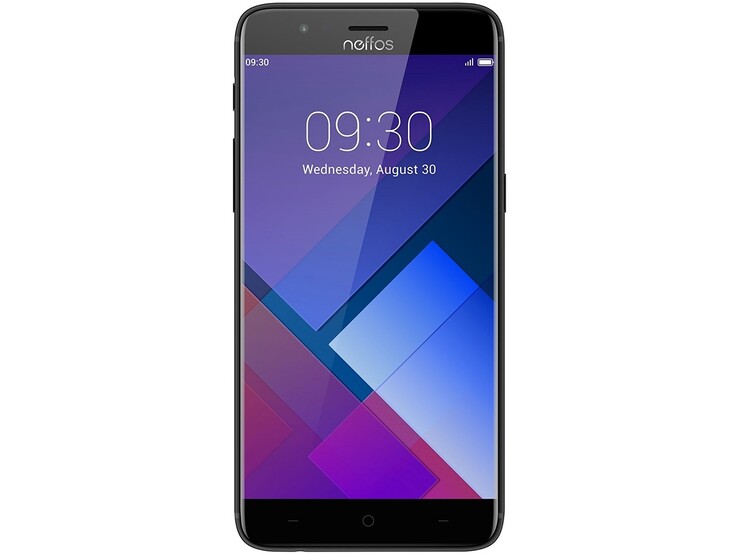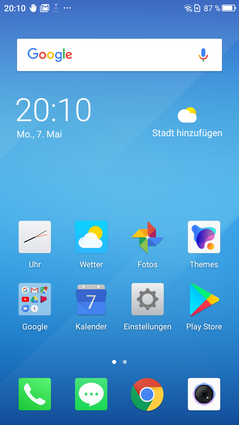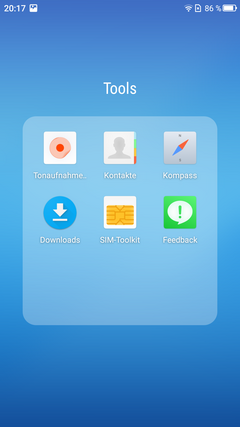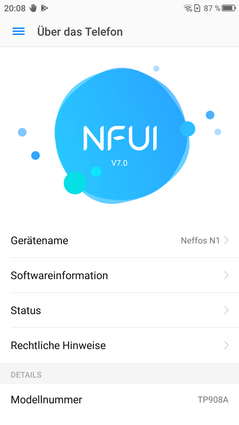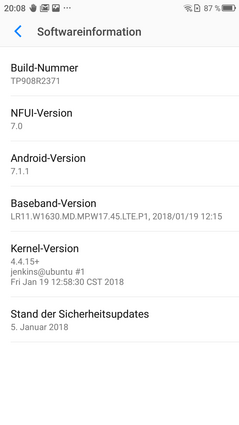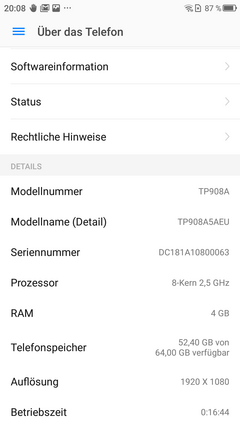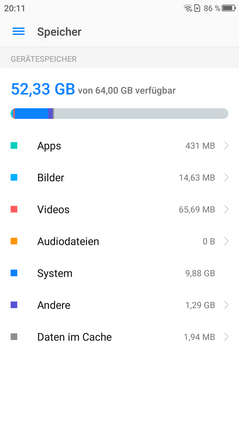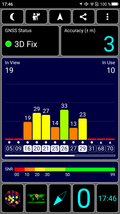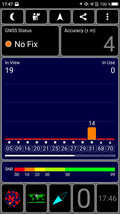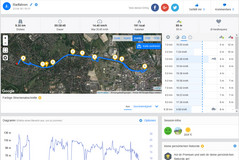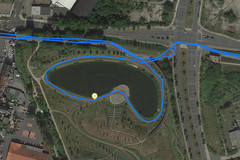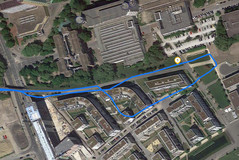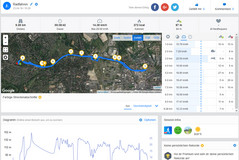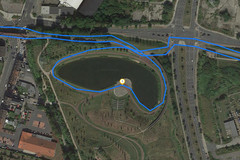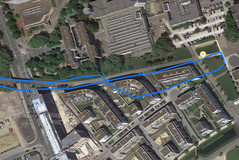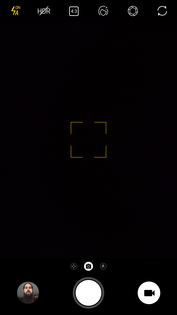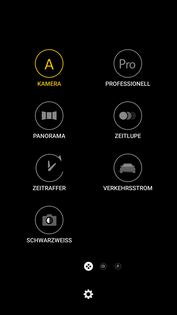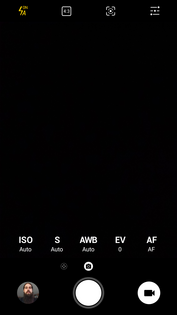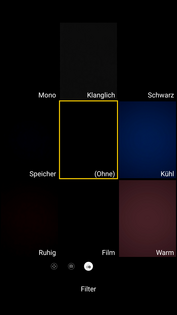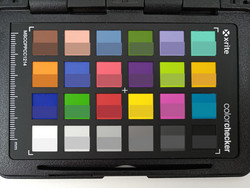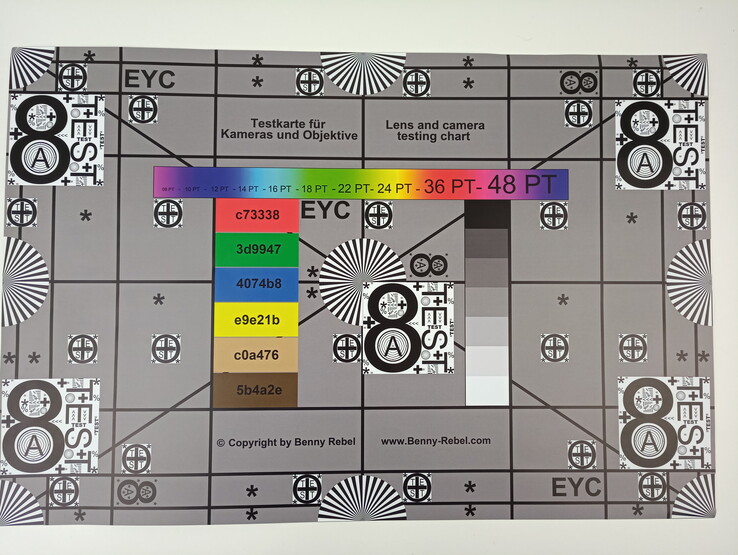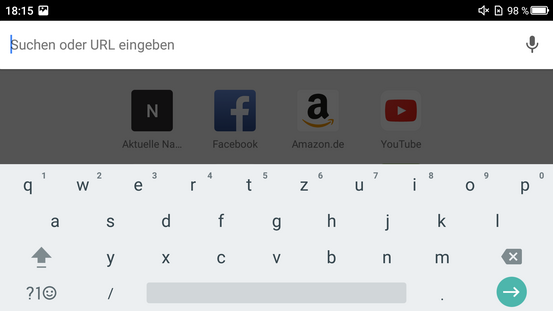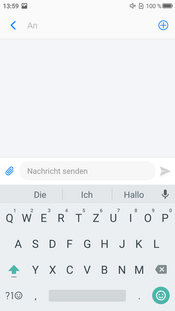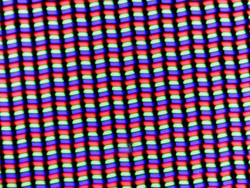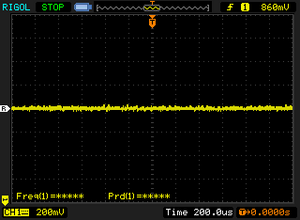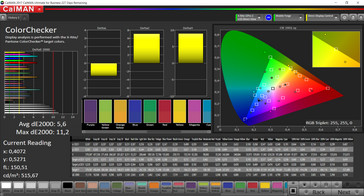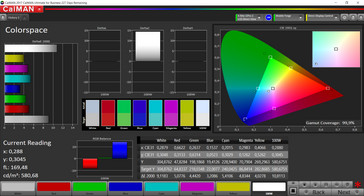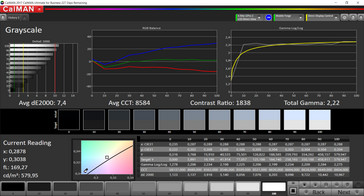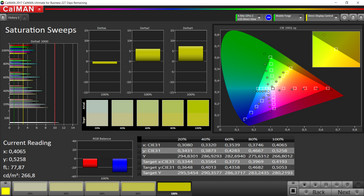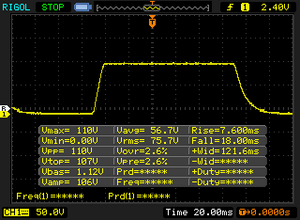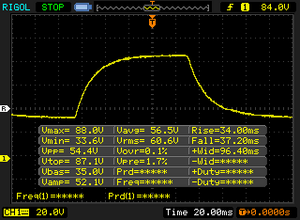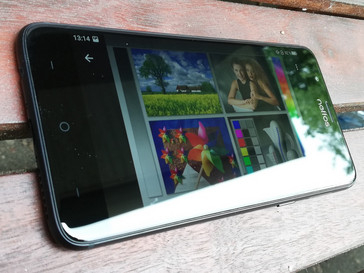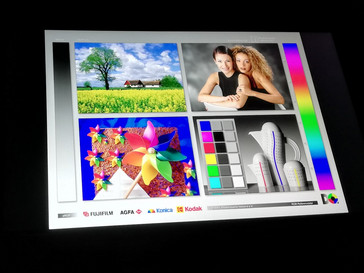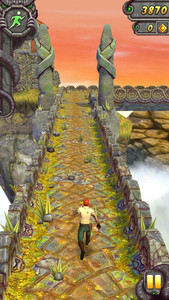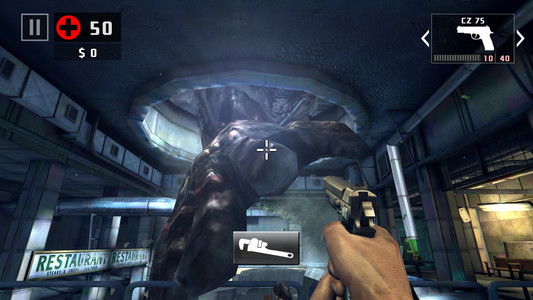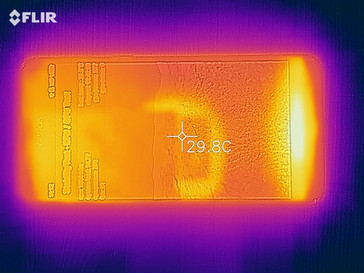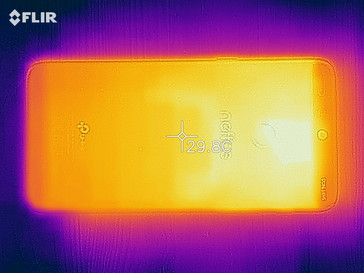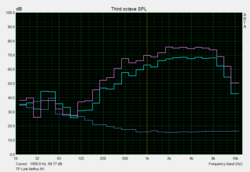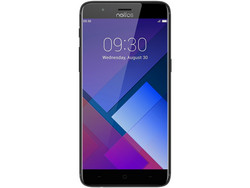TP-Link Neffos N1 Smartphone Review

The first impression of the Neffos N1 is slightly disillusioning: With the Mediatek Helio-P20-MT6757 SoC, TP-Link has used a mid-range chip that is already two years old. In combination with 4 GB of working memory and an ARM Mali T880-MP2 graphics unit, we cannot expect any tour de force in the benchmark results. However, there should still be a solid system performance.
There is an abundance of smartphones with a price of about 250 Euros (~$295). Correspondingly, there are many devices the Neffos N1 can be compared to. To offer an overview that is as good as possible, we decided for smartphone competitors with a similar price and comparable performance. Thus, we compare the TP-Link smartphone with the Sony Xperia XA1, the Blackview BV8000 Pro, the Motorola Moto G6, the BQ Aquaris VS Plus, and the ZTE Blade V9.
Case - Neffos N1 with a metal case
The case of the Neffos N1 is made from metal and appears very high-quality. Tight gaps in combination with the high weight create the impression of it being very robust. The keys and buttons on the device have only very small play in their places and offer crisp pressure points. The display is covered by Corning Gorilla Glass 3 which is supposed to protect the smartphone from drops. All the physical navigation controls are on the sides of the device, with a hardware button to mute all sounds among them.
Connections - A solid mid-range smartphone by TP-Link
With the Mediatek Helio-P20-MT6757 SoC and the ARM Mali T880-MP2 graphics unit, TP-Link uses mid-range technology that is about two years old and still used in affordable smartphones today. In addition, the Neffos N1 offers a 3.5-mm audio port and a USB Type-C port, which is only connected internally using the USB 2.0 standard, though. There is 4 GB of working memory and 64 GB internal flash storage. With Bluetooth 4.1, LTE, and WLAN, it also provides the basic wireless connections.
Software - Aged software in the TP-Link N1
Android Nougat version 7.1.1 is used as the operating system. At the time of testing, the security updates are on the level of January 5, 2018. While the user interface is defined by TP-Link's NFUI 7.0, aside from some changed icons and switched buttons, the user interface modifications are not very far reaching. You can create several user accounts in the settings menu, and SD cards can be formatted as internal storage.
Communication and GPS - TP-Link Neffos N1 only finds the location outdoors
Although TP-Link advertises the Neffos N1 as having a specially adjusted antenna technology, the smartphone shows only average results in our WLAN test. At about 100 Mbit/s, the transfer rates are on the same level as most of the competing devices. While the mobile reception is decent, in areas with low network coverage the connection is lost slightly faster than in other devices. Depending on the network coverage, the Neffos N1 can offer a connection from the GSM up to the LTE Cat.4 standard. In the latter, the LTE band 20, which is particularly important in rural areas, is also supported.
| Networking | |
| iperf3 transmit AX12 | |
| BQ Aquaris VS Plus | |
| Motorola Moto G6 | |
| Sony Xperia XA1 | |
| TP-Link Neffos N1 | |
| Blackview BV8000 Pro | |
| iperf3 receive AX12 | |
| BQ Aquaris VS Plus | |
| Motorola Moto G6 | |
| Sony Xperia XA1 | |
| Blackview BV8000 Pro | |
| TP-Link Neffos N1 | |
We are test the locating capabilities of the Neffos N1 using the GPS Test app. It takes quite long to create a connection to the satellite. Once that is done, the position is located with an accuracy of up to three meters, which is sufficient enough to perform simple navigation functions. The comparison to our Garmin Edge 500 reference device shows that the inaccuracy of the TP-Link is quite significant. By bike or on foot in particular, its navigation almost leads us into the lake or shows us first going on one side of the street and then back on the other. Indoors, it is not possible to locate us reliably and accurately with the device.
Phone Functions and Voice Quality - Booming phone calls using the N1
The standard Android app is used as the telephone app and offers all the well-known functions. During a phone call, the Neffos N1 shows a solid behavior. The voices of the conversation partners are produced adequately loud and phone calls are not disturbed by external noises. While the speaker phone function offers a very loud volume, the voices sound slightly dull and also booming at high volumes. The included headset offers a similar sound.
Cameras - A very good dual-camera setup in the Neffos N1
TP-Link has equipped the Neffos N1 with a 12+12 MP dual-camera system. This combination offers very good image results. Details and color transitions are clearly visible, and the camera reproduces light and dark image areas without any problems. The picture quality is good in close-ups as well as in panorama images. Even in bad light conditions, you can still get usable pictures, with only the edges of objects being slightly blurry. For selfie fans, the Chinese manufacturer provided an 8 MP front camera, which offers direct access to a "beautification" effect. This will slightly blur the selfie, so that smaller skin imperfections and wrinkles are removed.
Anyone who needs more from smartphone photography can also select various modes such as panorama, time lapse, and slow motion. By selecting the optional Pro mode, the user can make manual adjustments for ISO, white balance, and auto-focus. While the settings for video-recordings are limited to the resolution, the functions for time lapse and slow motion still remain available. In addition to 720p and 1080p, the Neffos N1 also supports 4K video-recordings, which also succeeds in making usable recordings. There is no option for automatic image stabilization.
We test under controlled light conditions how well the Neffos N1 reproduces colors and what reproduction performance we can expect from its camera. It shows that to a large extent colors are reproduced too dark, while very dark or black image areas are recorded too bright. The TP-Link smartphone produces a very detailed reproduction of our test chart. Even in the corners, you can still see small details and fine lines very clearly.
Accessories and Warranty - Standard accessories for the TP-Link smartphone
TP-Link includes a fast charger with the corresponding USB Type-A to USB Type-C cable and a headset for the 3.5-mm audio jack with the Neffos N1. You can also get protective covers for the N1 in the Neffos store. Other accessories need to be ordered from third-party manufacturers.
The warranty for the Neffos N1 is 24 months. Please see our Guarantees, Return policies and Warranties FAQ for country-specific information.
Input Devices and Operation - Simple keyboard and multi-touchscreen in the TP-Link N1
The "GBoard" standard Android keyboard of the Neffos N1 is easy to use. Inputs are accepted directly and acknowledged with a slight vibration. The keyboard in the SMS message window can only be used in portrait format, while in the browser, for example, you can also use it in landscape mode. While the multi-touchscreen shows no abnormalities, it offers a bit too much resistance to fingers gliding across it.
The keys and the button on the sides offer crisp pressure points but have a slight play in their respective placements. The fingerprint reader in the back allows you to unlock the system quickly and reliably. However, you may need a few tries until the right finger has found the sensor on the back.
Display - The Neffos N1 display is very reflective
The IPS display of the Neffos N1 shows the image content at a resolution of 1920x1080 pixels. While this positions the TP-Link smartphone in the middle of the field of competitors, it is able to distinguish itself from its competitors with a good brightness and a low black value overall. However, the display, which is covered by Corning Gorilla Glass 3, is very reflective, causing the brightness to be insufficient for reading the screen content in some circumstances, in particular during summer days.
| |||||||||||||||||||||||||
Brightness Distribution: 94 %
Center on Battery: 580 cd/m²
Contrast: 1933:1 (Black: 0.3 cd/m²)
ΔE ColorChecker Calman: 5.6 | ∀{0.5-29.43 Ø4.78}
ΔE Greyscale Calman: 7.4 | ∀{0.09-98 Ø5}
99.9% sRGB (Calman 2D)
Gamma: 2.22
CCT: 8584 K
| TP-Link Neffos N1 IPS, 1920x1080, 5.5" | Blackview BV8000 Pro IPS, 1920x1080, 5" | Sony Xperia XA1 IPS, 1280x720, 5" | Motorola Moto G6 IPS, 2160x1080, 5.7" | BQ Aquaris VS Plus IPS, 1920x1080, 5.5" | ZTE Blade V9 IPS, 2160x1080, 5.7" | |
|---|---|---|---|---|---|---|
| Screen | -52% | -25% | -2% | -11% | -16% | |
| Brightness middle (cd/m²) | 580 | 434 -25% | 522 -10% | 488 -16% | 634 9% | 459 -21% |
| Brightness (cd/m²) | 560 | 414 -26% | 499 -11% | 478 -15% | 635 13% | 437 -22% |
| Brightness Distribution (%) | 94 | 86 -9% | 92 -2% | 95 1% | 96 2% | 90 -4% |
| Black Level * (cd/m²) | 0.3 | 0.64 -113% | 0.74 -147% | 0.42 -40% | 0.49 -63% | 0.62 -107% |
| Contrast (:1) | 1933 | 678 -65% | 705 -64% | 1162 -40% | 1294 -33% | 740 -62% |
| Colorchecker dE 2000 * | 5.6 | 9.8 -75% | 4.2 25% | 3.9 30% | 5.9 -5% | 4.5 20% |
| Colorchecker dE 2000 max. * | 11.2 | 19.2 -71% | 11.5 -3% | 6.8 39% | 11.6 -4% | 7.3 35% |
| Greyscale dE 2000 * | 7.4 | 9.9 -34% | 6.4 14% | 5.3 28% | 7.8 -5% | 4.9 34% |
| Gamma | 2.22 99% | 2.64 83% | 2.18 101% | 2.41 91% | 2.16 102% | 2.17 101% |
| CCT | 8584 76% | 9219 71% | 7044 92% | 7146 91% | 8464 77% | 7261 90% |
* ... smaller is better
Screen Flickering / PWM (Pulse-Width Modulation)
| Screen flickering / PWM not detected | |||
In comparison: 53 % of all tested devices do not use PWM to dim the display. If PWM was detected, an average of 8108 (minimum: 5 - maximum: 343500) Hz was measured. | |||
With a black value of 0.3 and a contrast ratio of 1933:1, the images and videos appear very saturated and with strong colors on the Neffos N1. However, at high brightness you can notice some screen bleeding on the edges in dark images or screen content. But just like the blue color content being slightly elevated, this should also have no effect during daily operation of the smartphone.
Display Response Times
| ↔ Response Time Black to White | ||
|---|---|---|
| 25.6 ms ... rise ↗ and fall ↘ combined | ↗ 7.6 ms rise | |
| ↘ 18 ms fall | ||
| The screen shows relatively slow response rates in our tests and may be too slow for gamers. In comparison, all tested devices range from 0.1 (minimum) to 240 (maximum) ms. » 60 % of all devices are better. This means that the measured response time is worse than the average of all tested devices (20.2 ms). | ||
| ↔ Response Time 50% Grey to 80% Grey | ||
| 71.2 ms ... rise ↗ and fall ↘ combined | ↗ 34 ms rise | |
| ↘ 37.2 ms fall | ||
| The screen shows slow response rates in our tests and will be unsatisfactory for gamers. In comparison, all tested devices range from 0.165 (minimum) to 636 (maximum) ms. » 99 % of all devices are better. This means that the measured response time is worse than the average of all tested devices (31.6 ms). | ||
The TP-Link Neffos N1 is only suited for operation outdoors to a limited extent. Particularly on bright days, the very reflective display makes it very difficult to read its contents. That is despite the high brightness which the TP-Link smartphone already has at low brightness settings. The IPS panel of the Neffos N1 has a very high viewing-angle stability. You can see the screen content from any direction without distortions or color deviations.
Performance - A mid-range smartphone with a mid-range performance
TP-Link has equipped the Neffos N1 with a Mediatek Helio P20-MT6757 SoC and an ARM Mali T880-MP2 graphics unit. In combination with 4 GB of working memory and 64 GB of flash storage, this configuration corresponds to a mid-range smartphone and is comparable with other devices that are available for a price of about 250 Euros (~$295).
In our benchmark test, the TP-Link smartphone performs in a good medium range of its price class. However, the performance overall remains below average. But in everyday life, the system still runs smoothly and reacts to input quickly and reliably.
| AnTuTu v6 - Total Score (sort by value) | |
| TP-Link Neffos N1 | |
| Blackview BV8000 Pro | |
| Sony Xperia XA1 | |
| Motorola Moto G6 | |
| BQ Aquaris VS Plus | |
| ZTE Blade V9 | |
| Average Mediatek Helio P20 (LP4) MT6757 (59082 - 66472, n=3) | |
| AnTuTu v7 - Total Score (sort by value) | |
| TP-Link Neffos N1 | |
| Motorola Moto G6 | |
| BQ Aquaris VS Plus | |
| ZTE Blade V9 | |
| Average Mediatek Helio P20 (LP4) MT6757 (n=1) | |
| Lightmark - 1920x1080 1080p (sort by value) | |
| Sony Xperia XA1 | |
| Motorola Moto G6 | |
| ZTE Blade V9 | |
| Average Mediatek Helio P20 (LP4) MT6757 (n=1) | |
| Basemark ES 3.1 / Metal - offscreen Overall Score (sort by value) | |
| Sony Xperia XA1 | |
| Motorola Moto G6 | |
| ZTE Blade V9 | |
| Average Mediatek Helio P20 (LP4) MT6757 (n=1) | |
| Average of class Smartphone (205 - 7731, n=36, last 2 years) | |
In the browser benchmarks as well, the performance of the Neffos N1 comes in below the average of smartphones in general but still in the upper middle of the field of comparable devices. In everyday operation, the TP-Link N1 does not show any weaknesses while surfing on the Internet: Websites are briskly loaded and content is rendered quickly.
| JetStream 1.1 - Total Score | |
| TP-Link Neffos N1 (Chrome 62) | |
| Sony Xperia XA1 (Chrome 58) | |
| Average Mediatek Helio P20 (LP4) MT6757 (24.3 - 29, n=4) | |
| Blackview BV8000 Pro (Crome Version 51) | |
| Motorola Moto G6 (Chrome 66) | |
| ZTE Blade V9 (Ume Browser 1.2.18) | |
| Octane V2 - Total Score | |
| Average of class Smartphone (2228 - 121337, n=201, last 2 years) | |
| TP-Link Neffos N1 (Chrome 62) | |
| Average Mediatek Helio P20 (LP4) MT6757 (3609 - 5024, n=4) | |
| ZTE Blade V9 (Ume Browser 1.2.18) | |
| Sony Xperia XA1 (Chrome 58) | |
| Motorola Moto G6 (Chrome 66) | |
| Blackview BV8000 Pro (Crome Version 51) | |
| BQ Aquaris VS Plus | |
| Mozilla Kraken 1.1 - Total | |
| Blackview BV8000 Pro (Crome Version 51) | |
| BQ Aquaris VS Plus (Chrome 65) | |
| Average Mediatek Helio P20 (LP4) MT6757 (9506 - 23224, n=4) | |
| ZTE Blade V9 (Ume Browser 1.2.18) | |
| Motorola Moto G6 (Chrome 66) | |
| TP-Link Neffos N1 (Chrome 62) | |
| Sony Xperia XA1 | |
| Average of class Smartphone (257 - 28190, n=156, last 2 years) | |
* ... smaller is better
With 64 GB, the internal flash storage of the N1 is larger than those of comparable devices in this price range. Furthermore, it shows a good performance in our storage benchmarks and is slightly faster than the internal storage of the competitors. The SD card reader is able to offer good access rates using our Toshiba Exceria Pro M501 reference storage card, allowing the TP-Link Neffos N1 to be able to achieve one of the higher places in our comparison list.
| TP-Link Neffos N1 | Blackview BV8000 Pro | Sony Xperia XA1 | Motorola Moto G6 | BQ Aquaris VS Plus | ZTE Blade V9 | Average 64 GB eMMC Flash | Average of class Smartphone | |
|---|---|---|---|---|---|---|---|---|
| AndroBench 3-5 | -13% | -15% | -0% | -14% | -25% | -5% | 675% | |
| Sequential Read 256KB (MB/s) | 262.1 | 246.4 -6% | 248.5 -5% | 238.2 -9% | 274.3 5% | 265.4 1% | 277 ? 6% | 2226 ? 749% |
| Sequential Write 256KB (MB/s) | 184.6 | 177.1 -4% | 127.8 -31% | 117.2 -37% | 205.1 11% | 119.4 -35% | 178.4 ? -3% | 1848 ? 901% |
| Random Read 4KB (MB/s) | 57.4 | 52.7 -8% | 66.2 15% | 69.9 22% | 48.3 -16% | 29.81 -48% | 60.7 ? 6% | 295 ? 414% |
| Random Write 4KB (MB/s) | 45.48 | 15.05 -67% | 13.2 -71% | 59.9 32% | 6.4 -86% | 12.47 -73% | 33.8 ? -26% | 335 ? 637% |
| Sequential Read 256KB SDCard (MB/s) | 75.9 ? | 79.3 ? 4% | 78.4 ? 3% | 75.3 ? -1% | 84.5 ? 11% | 83.9 ? 11% | 77.4 ? 2% | |
| Sequential Write 256KB SDCard (MB/s) | 67.4 ? | 68.7 ? 2% | 68 ? 1% | 61.5 ? -9% | 60.6 ? -10% | 62.1 ? -8% | 58.3 ? -14% |
Games - Simple games on the Neffos N1
In the TP-Link Neffos N1, an ARM Mali-T880 MP2 ensures the necessary performance to be able to display older games and 3D apps smoothly. Games such as Dead Trigger 2 and Temple Run 2 run smoothly and can be controlled well using the touchscreen. While the position sensor could have been slightly more reactive, the smartphone has no problems with fast touch input. However, with slightly moist fingers, the resistance of the display becomes a bit too high to still react quickly.
| Dead Trigger 2 | |||
| Settings | Value | ||
| high | 52 fps | ||
Emissions - Warm hands with the TP-Link N1
Temperature
The temperature development at the surfaces of the Neffos N1 is moderate. However, due to the metal case the TP-Link smartphone still feels almost hot. During the charging process in particular, you can clearly notice the heat development. On the other hand, comparable devices develop even higher temperatures.
(+) The maximum temperature on the upper side is 34.7 °C / 94 F, compared to the average of 35.2 °C / 95 F, ranging from 21.9 to 247 °C for the class Smartphone.
(+) The bottom heats up to a maximum of 31.2 °C / 88 F, compared to the average of 34 °C / 93 F
(+) In idle usage, the average temperature for the upper side is 26 °C / 79 F, compared to the device average of 32.9 °C / 91 F.
Speakers
While the speakers of the Neffos N1 can become very loud, they tend to boom badly which already starts at half the available volume. If you adjust the volume slightly lower, audio content can be reproduced with comparatively balanced mids and highs, and only the lower notes drop quickly. Comparable devices do even worse than the Neffos N1 in this regard.
A 3.5-mm audio jack is available to connect external devices. The audio signals transferred to the speakers or headphones have a good quality. The plug sits in its place tightly and there is no danger that it will be accidentally pulled from the device.
TP-Link Neffos N1 audio analysis
(+) | speakers can play relatively loud (85.2 dB)
Bass 100 - 315 Hz
(-) | nearly no bass - on average 25.2% lower than median
(±) | linearity of bass is average (9% delta to prev. frequency)
Mids 400 - 2000 Hz
(+) | balanced mids - only 3.4% away from median
(±) | linearity of mids is average (7.2% delta to prev. frequency)
Highs 2 - 16 kHz
(±) | higher highs - on average 6.5% higher than median
(+) | highs are linear (2.7% delta to prev. frequency)
Overall 100 - 16.000 Hz
(±) | linearity of overall sound is average (21.1% difference to median)
Compared to same class
» 39% of all tested devices in this class were better, 8% similar, 53% worse
» The best had a delta of 11%, average was 35%, worst was 134%
Compared to all devices tested
» 57% of all tested devices were better, 7% similar, 35% worse
» The best had a delta of 4%, average was 24%, worst was 134%
ZTE Blade V9 audio analysis
(+) | speakers can play relatively loud (82.9 dB)
Bass 100 - 315 Hz
(-) | nearly no bass - on average 30.2% lower than median
(±) | linearity of bass is average (11% delta to prev. frequency)
Mids 400 - 2000 Hz
(+) | balanced mids - only 4.6% away from median
(+) | mids are linear (4.9% delta to prev. frequency)
Highs 2 - 16 kHz
(±) | higher highs - on average 7.7% higher than median
(+) | highs are linear (2.4% delta to prev. frequency)
Overall 100 - 16.000 Hz
(±) | linearity of overall sound is average (25.7% difference to median)
Compared to same class
» 63% of all tested devices in this class were better, 7% similar, 30% worse
» The best had a delta of 11%, average was 35%, worst was 134%
Compared to all devices tested
» 78% of all tested devices were better, 5% similar, 17% worse
» The best had a delta of 4%, average was 24%, worst was 134%
Sony Xperia XA1 audio analysis
(±) | speaker loudness is average but good (76.7 dB)
Bass 100 - 315 Hz
(-) | nearly no bass - on average 29.6% lower than median
(±) | linearity of bass is average (7% delta to prev. frequency)
Mids 400 - 2000 Hz
(+) | balanced mids - only 4.9% away from median
(±) | linearity of mids is average (7.8% delta to prev. frequency)
Highs 2 - 16 kHz
(±) | higher highs - on average 5% higher than median
(+) | highs are linear (5.9% delta to prev. frequency)
Overall 100 - 16.000 Hz
(-) | overall sound is not linear (30.1% difference to median)
Compared to same class
» 78% of all tested devices in this class were better, 3% similar, 18% worse
» The best had a delta of 11%, average was 35%, worst was 134%
Compared to all devices tested
» 88% of all tested devices were better, 3% similar, 9% worse
» The best had a delta of 4%, average was 24%, worst was 134%
Battery Life - TP-Link smartphone with a good battery life
Power Consumption
The power consumption we measured for the Neffos N1 is similar to those of comparable devices. Overall, the consumption values are almost exactly at the average of the devices with the same SoC as the TP-Link smartphone.
| Off / Standby | |
| Idle | |
| Load |
|
Key:
min: | |
| TP-Link Neffos N1 3260 mAh | Blackview BV8000 Pro 4180 mAh | Sony Xperia XA1 2300 mAh | Motorola Moto G6 3000 mAh | BQ Aquaris VS Plus 3400 mAh | ZTE Blade V9 3200 mAh | Average Mediatek Helio P20 (LP4) MT6757 | Average of class Smartphone | |
|---|---|---|---|---|---|---|---|---|
| Power Consumption | -30% | 30% | -2% | -35% | -4% | -16% | -67% | |
| Idle Minimum * (Watt) | 0.69 | 0.85 -23% | 0.64 7% | 0.6 13% | 0.79 -14% | 0.71 -3% | 0.895 ? -30% | 0.848 ? -23% |
| Idle Average * (Watt) | 1.64 | 1.56 5% | 0.81 51% | 1.81 -10% | 2.29 -40% | 1.73 -5% | 1.553 ? 5% | 1.434 ? 13% |
| Idle Maximum * (Watt) | 1.67 | 1.67 -0% | 0.86 49% | 1.86 -11% | 2.3 -38% | 1.78 -7% | 1.75 ? -5% | 1.618 ? 3% |
| Load Average * (Watt) | 2.59 | 4.37 -69% | 2.09 19% | 2.78 -7% | 3.84 -48% | 2.74 -6% | 3.29 ? -27% | 7.01 ? -171% |
| Load Maximum * (Watt) | 4.36 | 7.06 -62% | 3.31 24% | 4.04 7% | 5.95 -36% | 4.36 -0% | 5.28 ? -21% | 11.3 ? -159% |
* ... smaller is better
Battery Life
TP-Link advertises the Neffos N1 with a long battery life. In our practically relevant WLAN test, the smartphone lasts for almost 13 hours, taking advantage of the capacity of the battery fairly well. The included 18-Watt charger fully recharges the smartphone within almost 2 hours.
| TP-Link Neffos N1 3260 mAh | Blackview BV8000 Pro 4180 mAh | Sony Xperia XA1 2300 mAh | Motorola Moto G6 3000 mAh | BQ Aquaris VS Plus 3400 mAh | ZTE Blade V9 3200 mAh | |
|---|---|---|---|---|---|---|
| Battery runtime | ||||||
| WiFi v1.3 (h) | 12.9 | 11.5 -11% | 11.3 -12% | 9.2 -29% | 10.7 -17% | 13.2 2% |
Pros
Cons
Verdict - TP-Link dual-camera system as reason for the purchase
In our test, the Neffos N1 presents itself as a solid mid-range smartphone. The performance corresponds to what was promised by the technical equipment. In comparison to affordable competing devices, the TP-Link smartphone is able to stand out with its 12+12 MP dual-camera setup, which takes good pictures and is also very usable in bad light conditions.
Buyers of the Neffos N1 are greeted by a smartphone that is delivered with slightly aged software. The system performance is solid but not outstanding. Apart from the very good dual-camera function, other smartphones are at a newer level, and the competitors also fare better in terms of their battery life.
The Neffos N1 shines particularly with its good camera. The aged software and short battery life present the smartphone in a worse light than should be necessary.
TP-Link Neffos N1
- 05/14/2018 v6 (old)
Mike Wobker




